Famous Dublin Cemetery: Glasnevin Cemetery and museum
Visiting Glasnevin Cemetery Museum in Dublin is something that many people want to see as it is sacred ground for many of the Irish heroes and heroines of the Uprising.
Glasnevin Cemetery Museum is also a central location for those wanting to trace their Irish ancestors. The cemetery is free to visit and wander around the grounds.
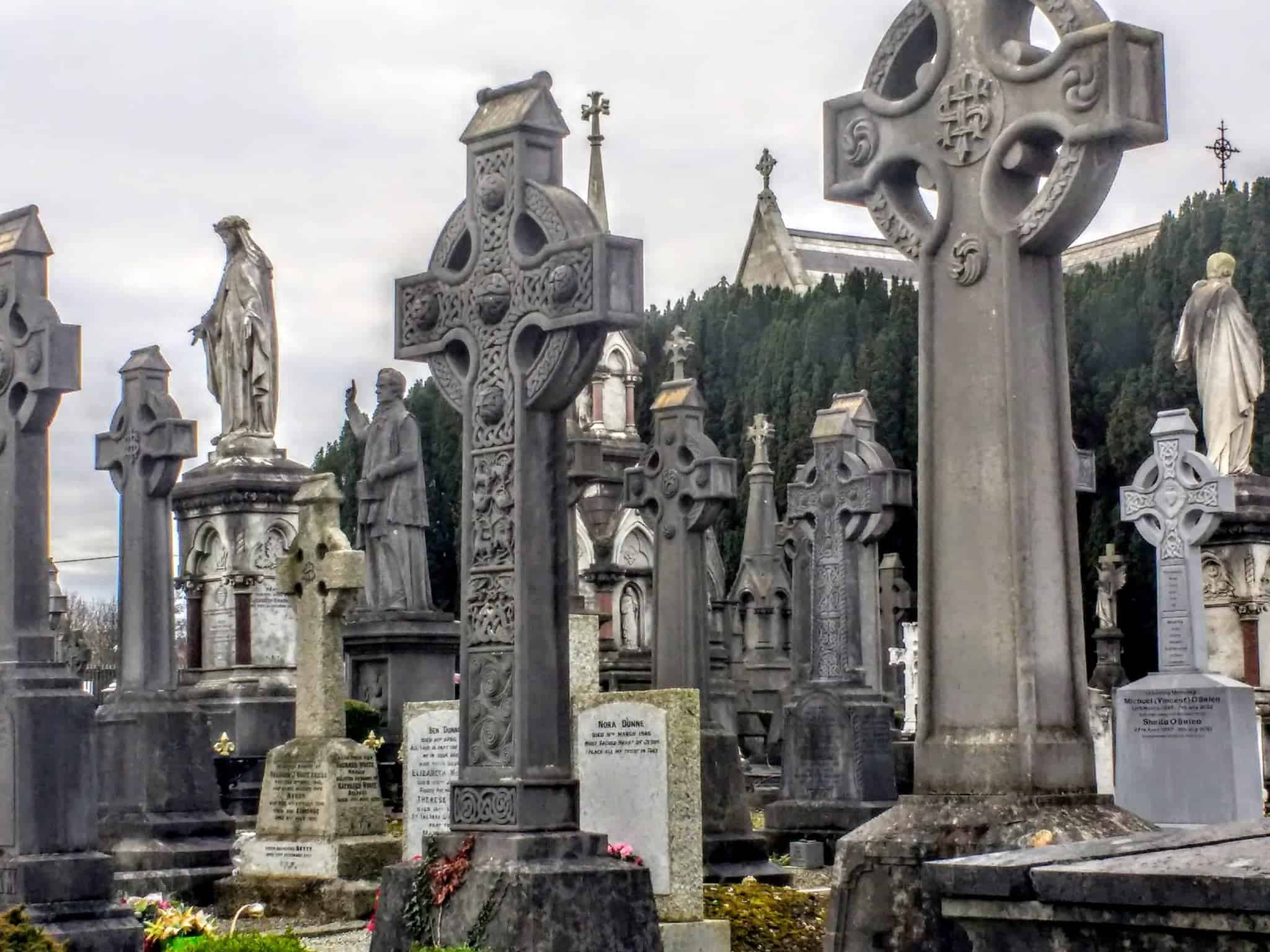
There are maps available at the front desk for those interested in a self-guided tour. However, take advantage of the Glasnevin cemetery tours that are available as you will learn far more than you ever anticipated.
- Famous Dublin Cemetery: Glasnevin Cemetery and museum
- Glasnevin cemetery FAQS
- Glasnevin Cemetery and Museum History
- How to get to Glasnevin Cemetary
- Public Transport Routes: buses to Glasnevin Cemetery
- Glasnevin Cemetery what to see
- Glasnevin Cemetery tour
- Self-Guided & Audio Tours of Glasnevin
- Glasnevin Cemetery famous graves
- Michael Collins grave site
- What to visit near Glasnevin Cemetery
Glasnevin cemetery FAQS
Before Glasnevin cemetery where were Catholics buried? Prior to the establishment of Glasnevin Cemetery, Irish Catholics were not permitted to have any cemeteries of their own and buried their dead in the grounds of old churchyards and monasteries or in Protestant Churchyards.
What is the cost of tickets to the Glasnevin Museum? Admission to the Glasnevin Museum is €4.50 there is a really interesting display about the 1916 Uprising to see. If you want a tour of the cemetery and entrance to the Museum it’s €10.
How many people are buried at Glasnevin cemetery? The Cemetery is the last resting place of some 1.5million people. These include the nation’s great and good, which is why, over the years, it has taken on the role of ‘national’ cemetery.
What is the oldest graveyard in Dublin? The oldest cemetery is not Glasnevin it is a cemetery that lies behind the Irish Museum of Modern Art of the entranceway to the Royal Hospital of Kilmainham.
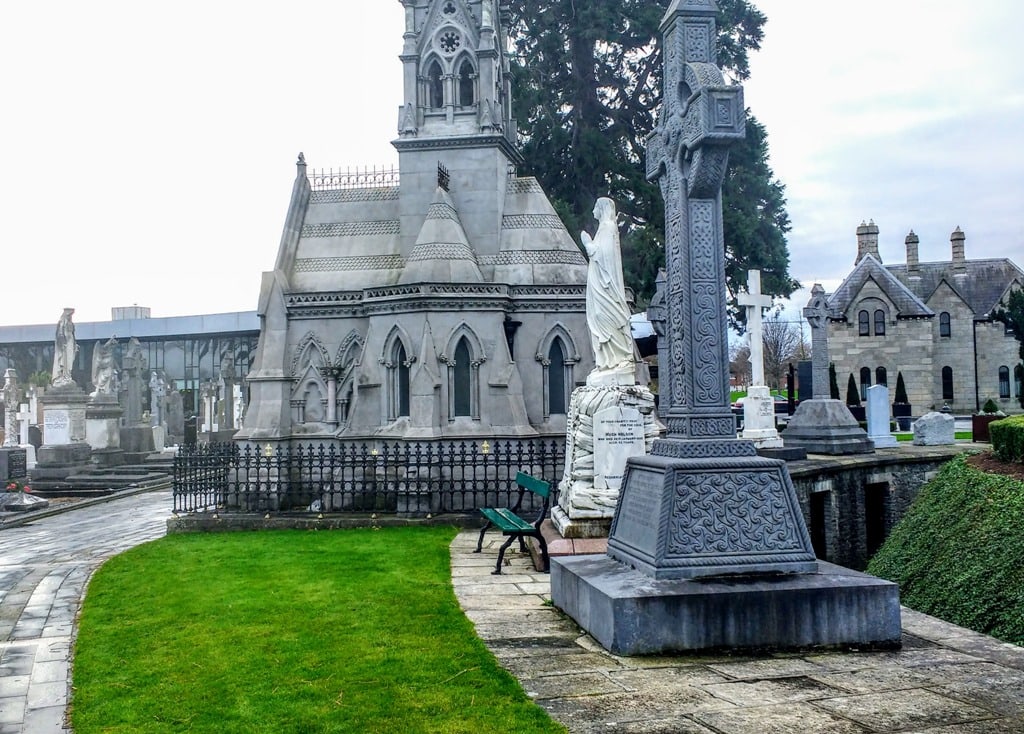
Who built Glasnevin Cemetery? The creation of a special committee of protestant churchmen and catholic bought space in Goldenbridge and this space led to the opening of Glasnevin Cemetery in 1832. The first burial there was that of Michael Carey, an eleven-year-old boy from Francis Street in Dublin.
How much is a grave plot in Glasnevin? One of the most expensive burial plots in the country costs €32,000 which includes a double grave near the chapel of Glasnevin Cemetery. Other burial plots in Glasnevin Cemetery range from €2,000 in the gardens to €8,000.
What are the Glasnevin cemetery hours? The main gates are open to the public every day from 9 to 5. The visitor centre is open from Wednesday to Sunday 10 to 5.
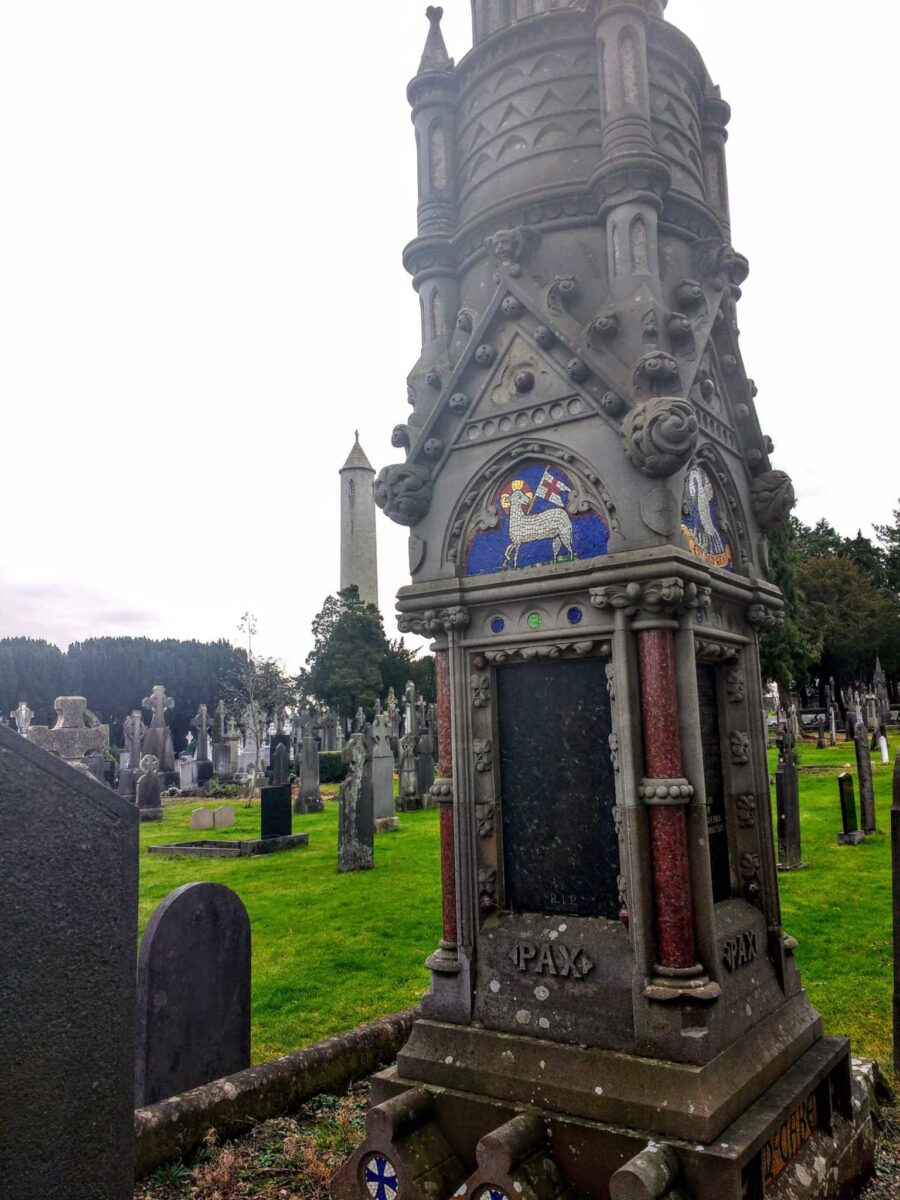
What is the Glasnevin Cemetery grave search? The Dublin Cemeteries Trust Archive is responsible for and holds the extant records of the Trust produced over the almost two hundred years of its existence. The Genealogy Research Service is open for appointments and in-person service from Wednesday to Friday 1- to 5 and other services are available via the Online services are available also at Burial Records & Genealogy.
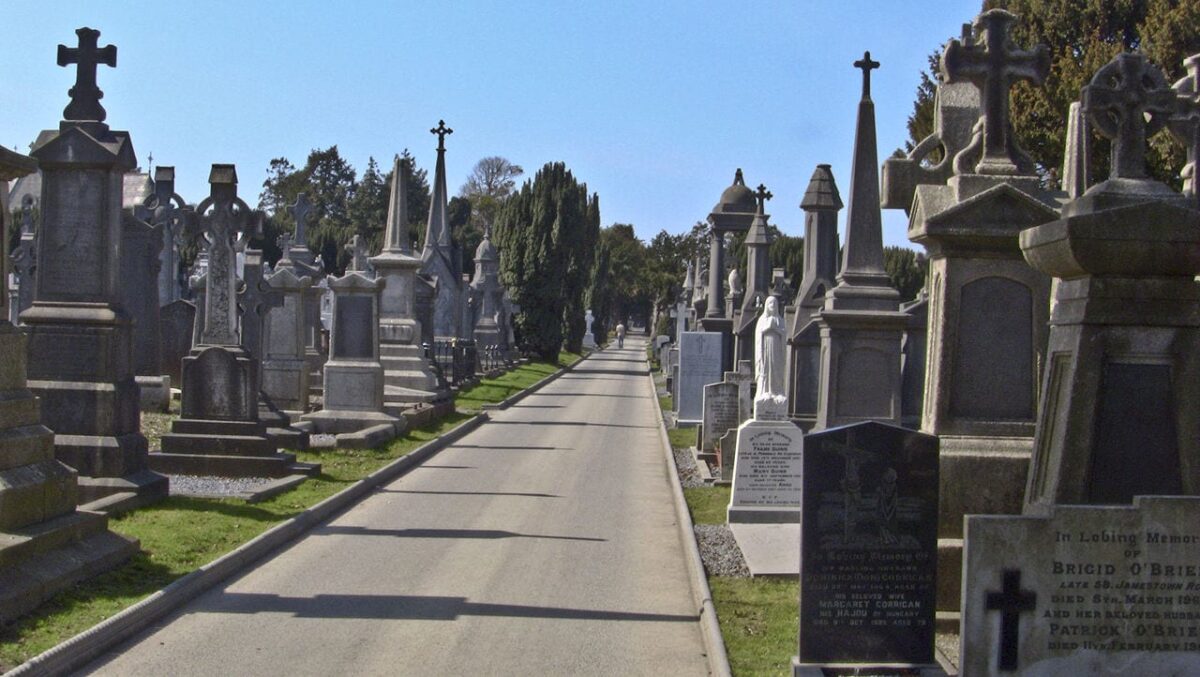
53 Ultimate Ireland travel tips
Glasnevin Cemetery and Museum History
If you have relatives or ancestors buried at Glasnevin but aren’t sure exactly where – just ask at the desk, as long as you have the full name and date of death they will more than likely be able to look it up on the computers and provide you with a map to the grave.
Dublin’s Glasnevin Cemetery is not just a burial ground it is also a suburb of Dublin. In the 6th century, Saint Mobhi established a Monastery here, and a village grew up around it.
Before Glasnevin was founded, the Irish Catholics had no cemeteries to bury their dead and the repressive Penal Laws placed ridiculous restrictions on the performance of Catholic services.
In 1823 at St. Kevin’s Churchyard, a Protestant Sexton took to reprimanding a Catholic priest for performing a version of the funeral mass. A public outcry at this led to Daniel O’Connell launching a campaign for a burial ground for Catholics so they could have a dignified burial.
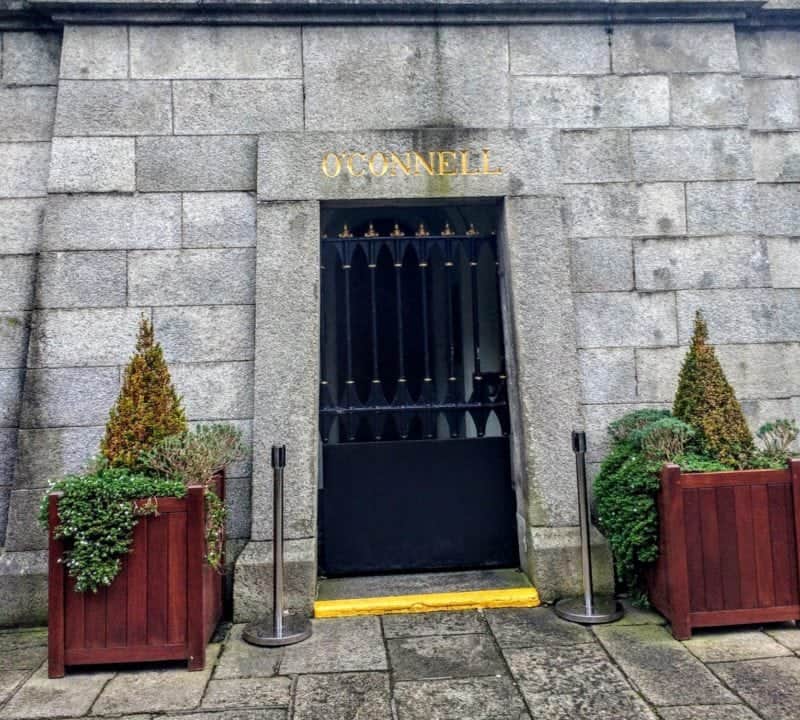
Planning a dream trip to Ireland? Everything you need to know
Glasnevin Cemetery was consecrated and opened to the public in 1832. The cemetery was initially known as Prospect Cemetery originally covered nine acres the cemetery has now grown to approximately 124 acres. The Irish call it the ‘dead centre’ of Dublin.
The high wall with watchtowers surrounding the main part of the cemetery was built to deter body snatchers, who were active in Dublin in the 18th and early 19th centuries. The watchmen also had a pack of bloodhounds who roamed the cemetery at night.
The Holy Faith convent now stands on the site of Glasnevin House, which was home to ship-owner Sir John Rogerson. Dean Swift went into hiding in an outhouse at Delville, home of the Delaneys, together with the printing press that published his controversial Drapier’s Letters.
Mary Delaney, a supporter of the local weaving industry, visited Dublin Castle dressed from head to toe in Irish lace and linen as a protest against linen and lace tariffs. These are all famous figures in Irish history that lived in the village of Glasnevin.
How to get to Glasnevin Cemetary
Glasnevin Cemetery Museum is located on Finglas Road, Dublin 11, approximately 2.5km from the City Centre. Pedestrian access is also available through the original Prospect Square gate (beside the famous Gravediggers Pub).
Public Transport Routes: buses to Glasnevin Cemetery
Bus to Glasnevin
Dublin bus to Glasnevin cemetery: From O’Connell Street, you can take the 4,9,40,83 or 140 bus to Glasnevin Cemetery Museum.
Hop-On Hop-Off Bus
The City Sightseeing Dublin ‘Hop-On Hop-Off’ Tour runs regularly to/from Glasnevin Cemetery, we are on the blue route.
By Car
Glasnevin Cemetery is situated on Finglas Road (N2). It is close to the M1, M50 and Dublin Airport.
By Train
There is a DART station in Drumcondra which is a 20-minute walk from Glasnevin Cemetery.
Glasnevin Cemetery what to see
Glasnevin Cemetery tour
The Glasnevin Trust offers several tours of the Cemetery and a superb exhibition called the Extra-ordinary Lives. Located on the first floor of the Visitor Centre, the new “Extra-ordinary Lives” indoor exhibition is centered around the surprising stories of more than 20 people who have their final resting place in Glasnevin Cemetery.
Irish History Tour and exhibition which includes learning more about the figures involved in key events such as the 1916 Rising, the War of Independence and the Civil War. Weave through the stunning grounds of Ireland’s National Cemetery while our expert Tour Guides share the fascinating stories of iconic figures from Irish history who have been laid to rest here. €13.00 adult.
Irish History Tour tower climb includes the highlights of the O’Connell Tower, a look at the ornate crypt, the exhibition and you can climb the 198 steps to the summit of the Tower with its panoramic views of the grounds, the City of Dublin, Wicklow and the Irish Sea. €18.00 for an adult ticket.
Women and History Tour: The Women in History Tour at Experience Glasnevin shines a light on the fascinating stories of some of the extraordinary women buried in Glasnevin Cemetery, all of whom played key roles in shaping the course of Irish history. €13 for an adult ticket.
Self-Guided & Audio Tours of Glasnevin
There is an audio guide available (includes exhibition) and map combination which enables you to explore a selection of the key graves in Glasnevin Cemetery at your own pace. The audio guide is available available from Visitor Centre Ticket Desk in: English, Irish, French, Italian, Spanish and German. Adult €8.
Glasnevin Museum
Glasnevin Cemetery is the resting place of many Irish. From the unmarked mass graves of nearly 800,000 who dies during the Great Famine and the Cholera epidemics of the 1800s to many of those who shaped the Republic’s history.
Daniel O’Connell, who founded Glasnevin believed every citizen had a right to a proper burial, regardless of their religion and even today anyone of any religion can be buried at Glasnevin. Glasnevin is modelled on the famous Père Lachaise Cemetery in Paris.
The Glasnevin museum has 3 levels and the tour beings with the Necropolis where you will see a rolling screen that could take 10 hours to watch as it contains all the folks names who are buried here. There are displays of interactive headstones that tell really interesting stories of those buried there and you can even listen in on the conversations of the gravediggers.
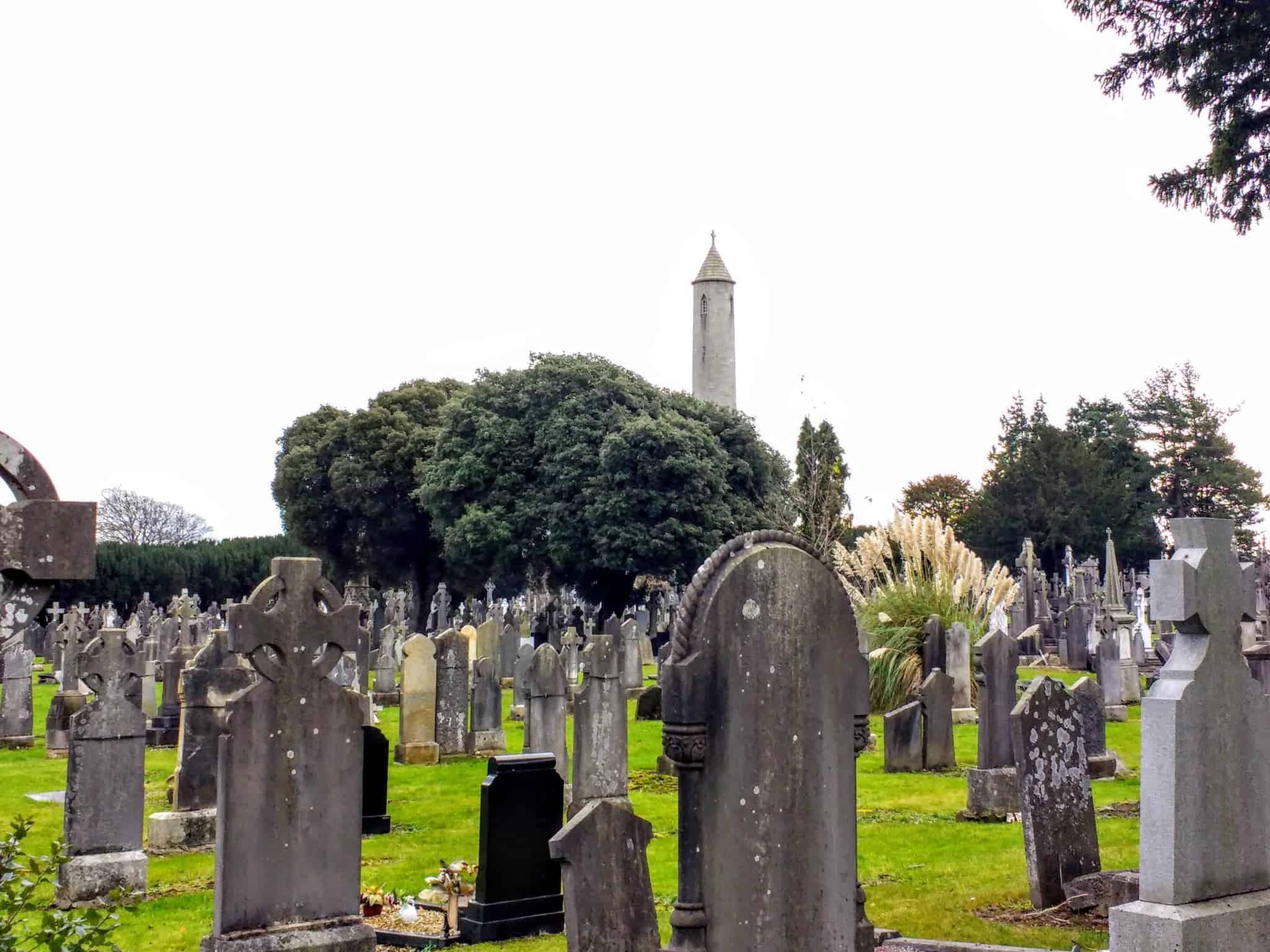
Glasnevin Museum is the repository of all the information on those that are buried here, which number over 1.5 million. The Museum shares the stories and history of Ireland in beautifully laid out exhibits and they are immensely helpful when searching for a grave or doing a genealogy search for your family history.
Glasnevin Cemetery is also the final resting place of many famous Irish people. Opened in the 1830s with high stonewalls and seven watchtowers that were manned by armed guards to deter body snatchers, the cemetery is a ‘Who’s Who’ of key historical figures in Ireland.
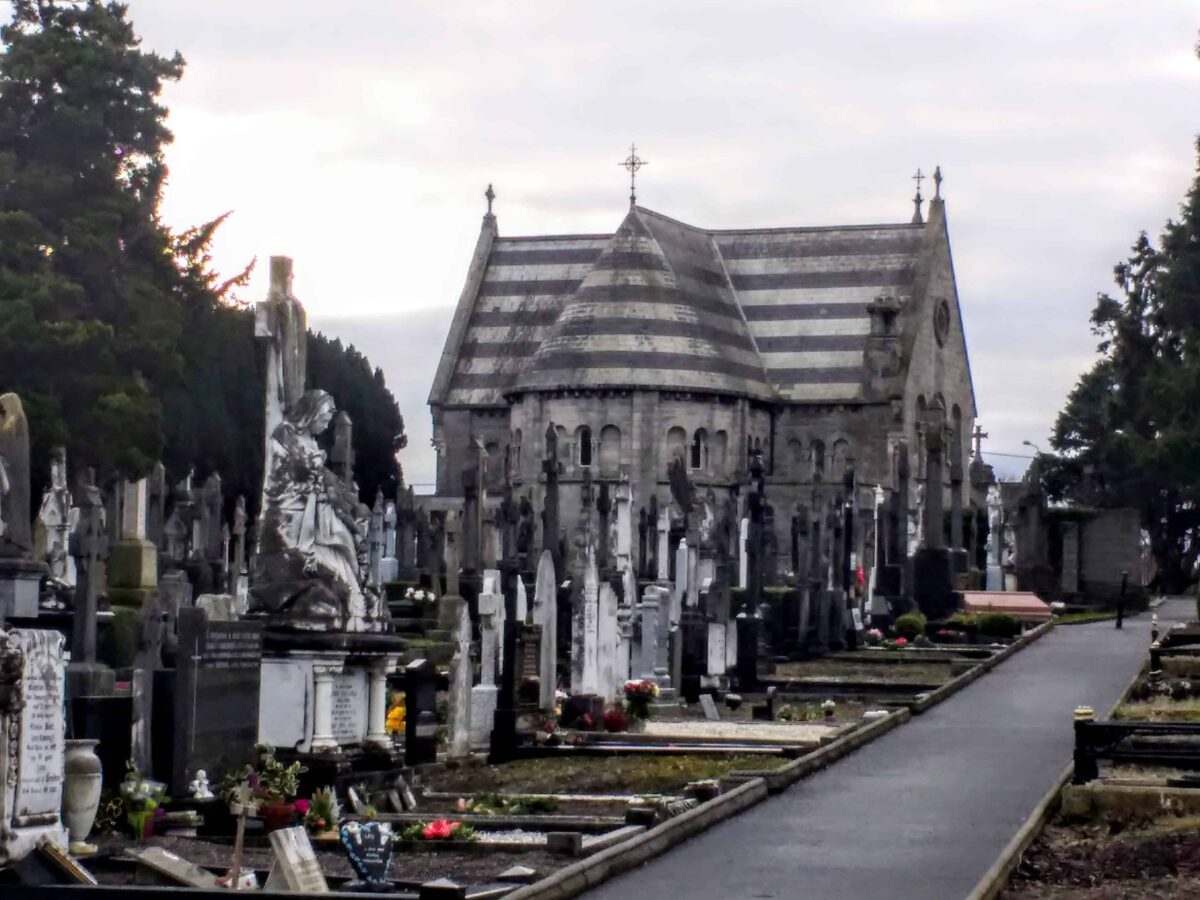
Find a grave at Glasnevin Cemetery
Due to the meticulous record-keeping of Glasnevin Trust since 1828, they can help you find your relatives, and family history or discover more about the stories of the people buried in Glasnevin Trust Cemeteries. There is also a free Glasnevin cemetery map of graves available at the front counter.
The genealogy results preview is free to access, simply use the search tool above to get started. You will then be prompted to buy credits if you wish to take your search deeper.
Glasnevin Cemetery famous graves
Daniel O’Connell – known as the “Great Liberator,” O’Connell was an Irish political leader and a campaigner for Catholic Emancipation and the repeal of the Act of Union.
Charles Stewart Parnell – was the founder and leader of the Irish Parliamentary Party.
Maud Gonne – Maud was won over to the cause of the Republic and was imprisoned as a rebel leader but she was an English actress originally.
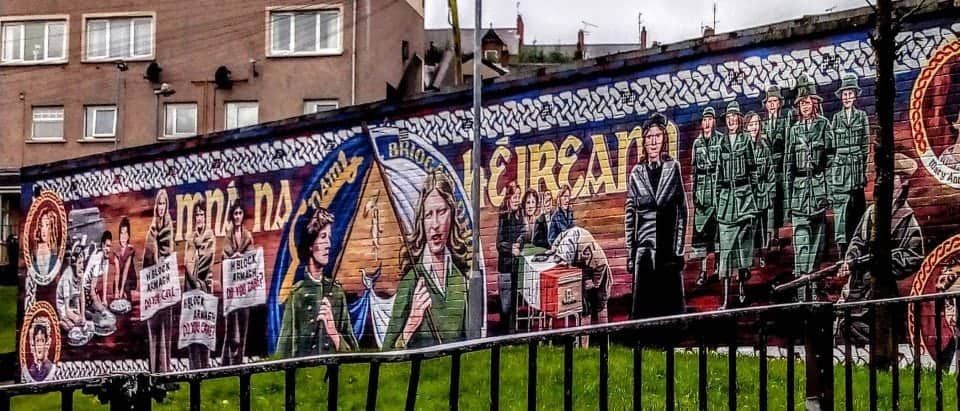
Éamon de Valera – deeply involved in the Republic’s fight for independence Éamon was the founder of Fianna Fail and Ireland’s Prime Minister and President.
Brendan Behan – Imprisoned for his IRA activity, Brendan was one of Ireland’s finest poets, novelists and playwrights.
Constance Markievicz – a suffragette and revolutionary Constance was the first woman elected to the UK’s House of Commons. You can see Constance’s home in Sligo when during the area.
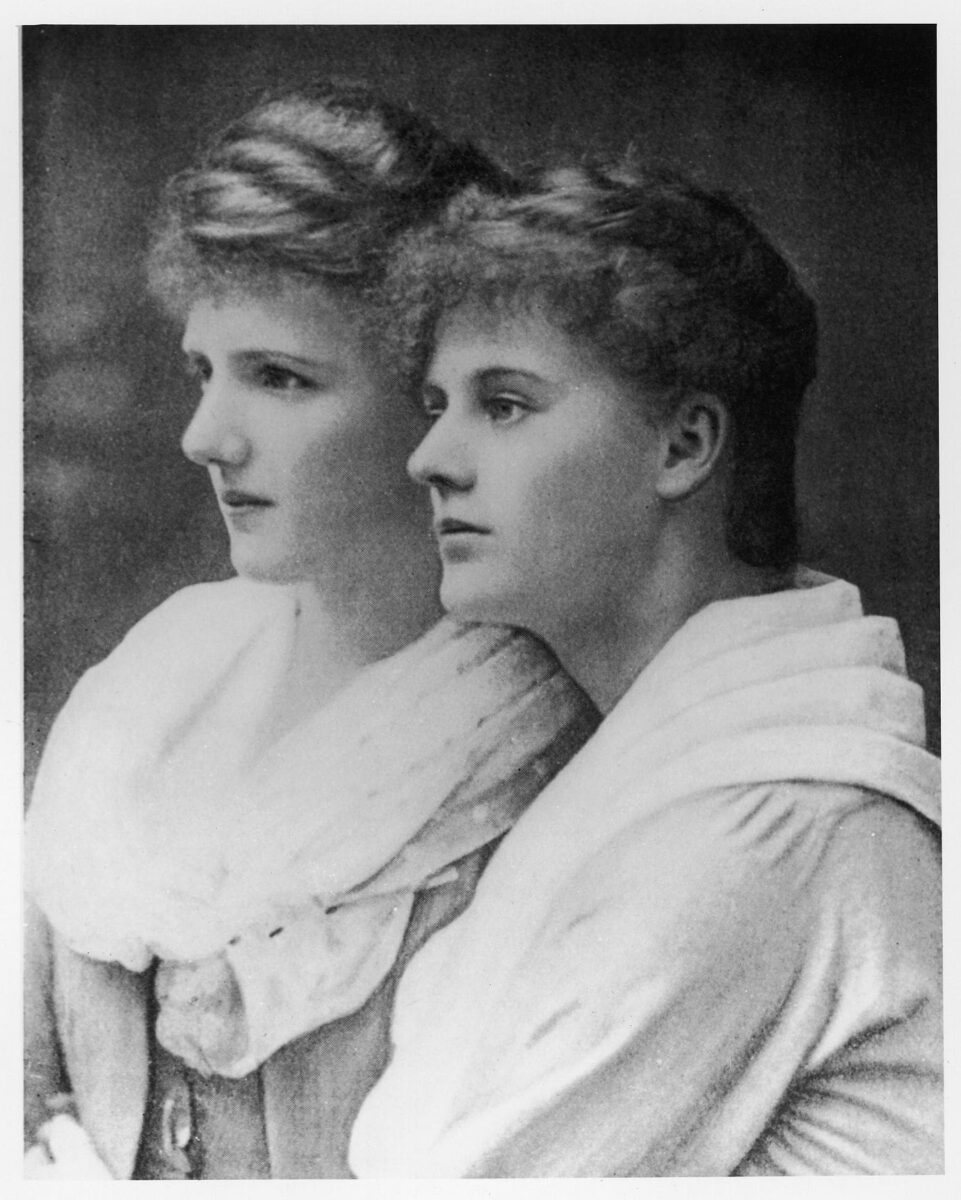
Christy Brown – The famous Irish writer and painter with cerebral palsy, played by Daniel Day-Lewis in the film My Left Foot.
Luke Kelly was one of Ireland’s greatest folk singers in The Dubliners.
Arthur Griffith the founder of Sinn Fein and a leader in the new Free State.
Michael Collins grave site
The grave of Michael Collins, the nationalist leader who was killed in the Irish Civil War in 1922, is among the most visited sites in Glasnevin. Around him were buried at least 183 soldiers of the Irish Free State. In 1967 their names were recorded on a memorial around Collin’s grave. Even though Collins was born in Cork, he is buried in Glasnevin Cemetery.
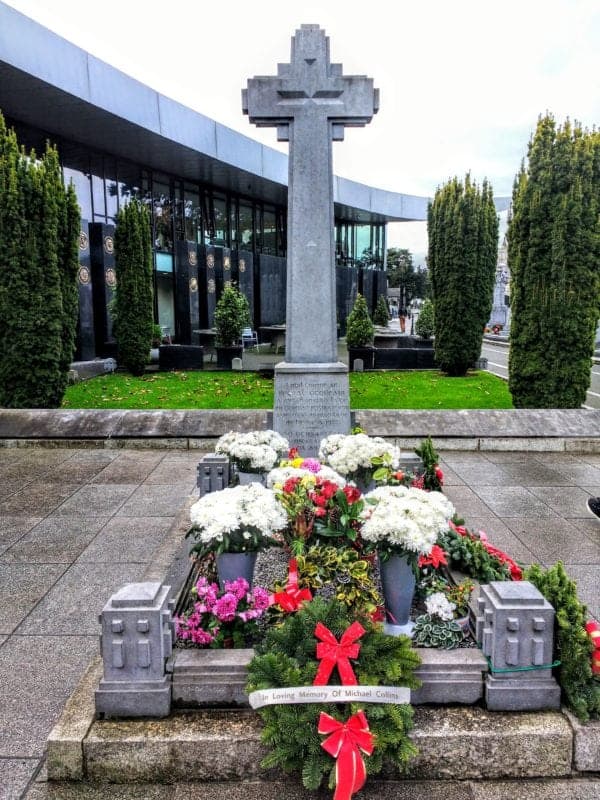
The Angels Plot at Glasnevin Cemetery
Glasnevin is one of the few cemeteries that allowed stillborn babies to be buried in consecrated ground and contains an area called the Angels Plot.
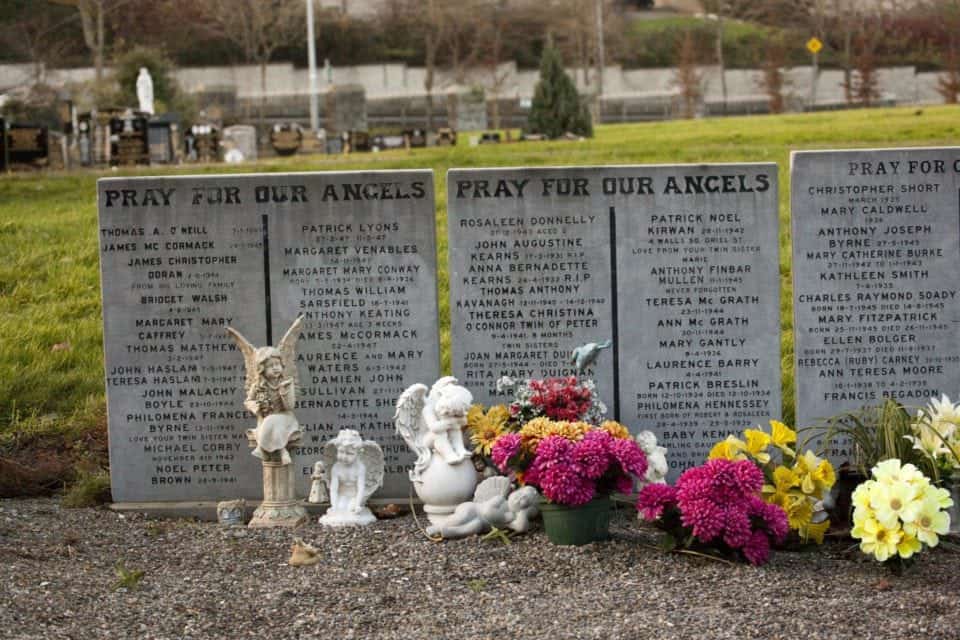
Daniel O’Connell’s Memorial
In the mid-1800s a tower was built to commemorate Daniel O’Connell’s death The building of the tower to commemorate O’Connell’s death, was funded by public subscriptions and designed by George Petrie. The tower was bombed by loyalists in 1971 and has recently undergone reconstruction of the internal staircase that was destroyed in the attack.
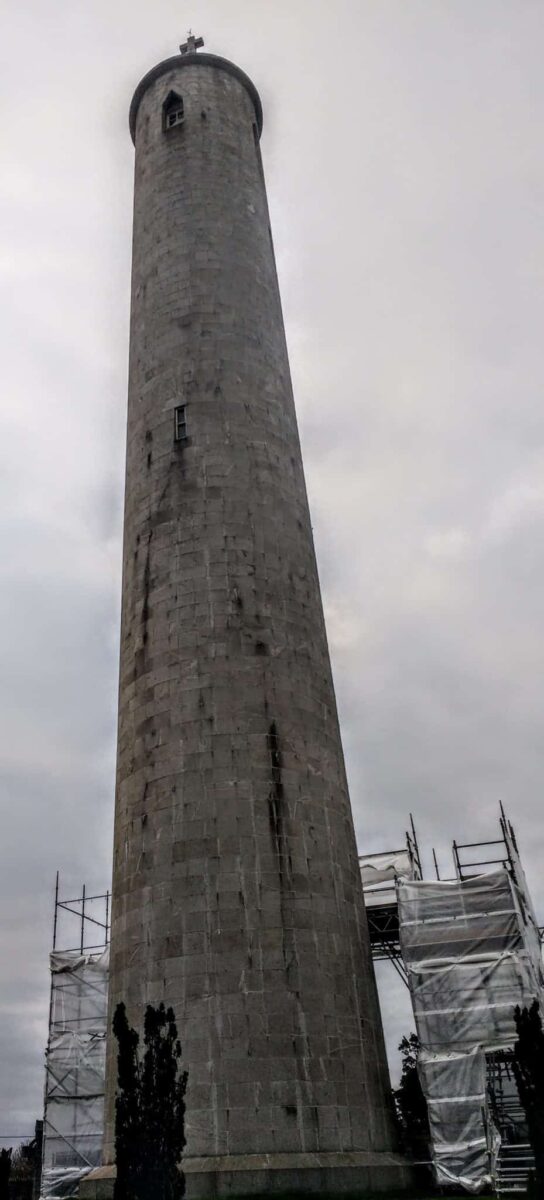
The Tower has now been re-opened and restored after the attack.
The tower itself survived the blast, thanks to the three-foot-thick granite stones of its construction. However, with the windows and stairs blown out, it was sealed up, including the crypt at the bottom which contains the sarcophagus of Daniel O’Connell and the remains of several members of his family in a side chamber. From the Irish Times.
Memorial Wall at Glasnevin Cemetery
A necrology wall erected at Glasnevin Cemetery in Dublin to remember all those who died in the Irish Revolution is being discontinued because of safety and vandalism concerns.
A spokesperson said the wall had been vandalised three times and it would be impossible to stop a fourth such incident. The names of those who died in the Easter Rising will be removed from the wall too. Instead, he said the trust would erect a separate memorial to all those who died in the 1916-1923 period along with a book commemorating the dead from that period who are buried in the cemetery.
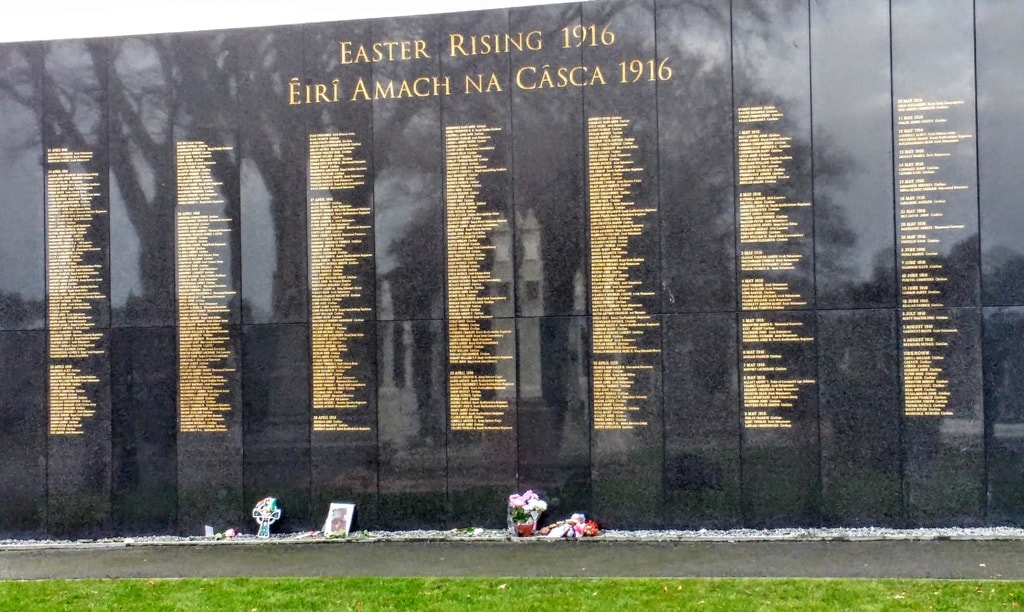
What to visit near Glasnevin Cemetery
National Botanical Gardens
Glasnevin is also home to Ireland’s National Botanical Gardens, with its beautiful historic glasshouses that date back to 1795. The flower inspired Thomas Moore’s “Last Rose of Summer” and is said to bloom near the main entrance gates. The gardens were built originally to study agriculture but by the 1830s the pursuit of botanical knowledge had overtaken the original purpose.
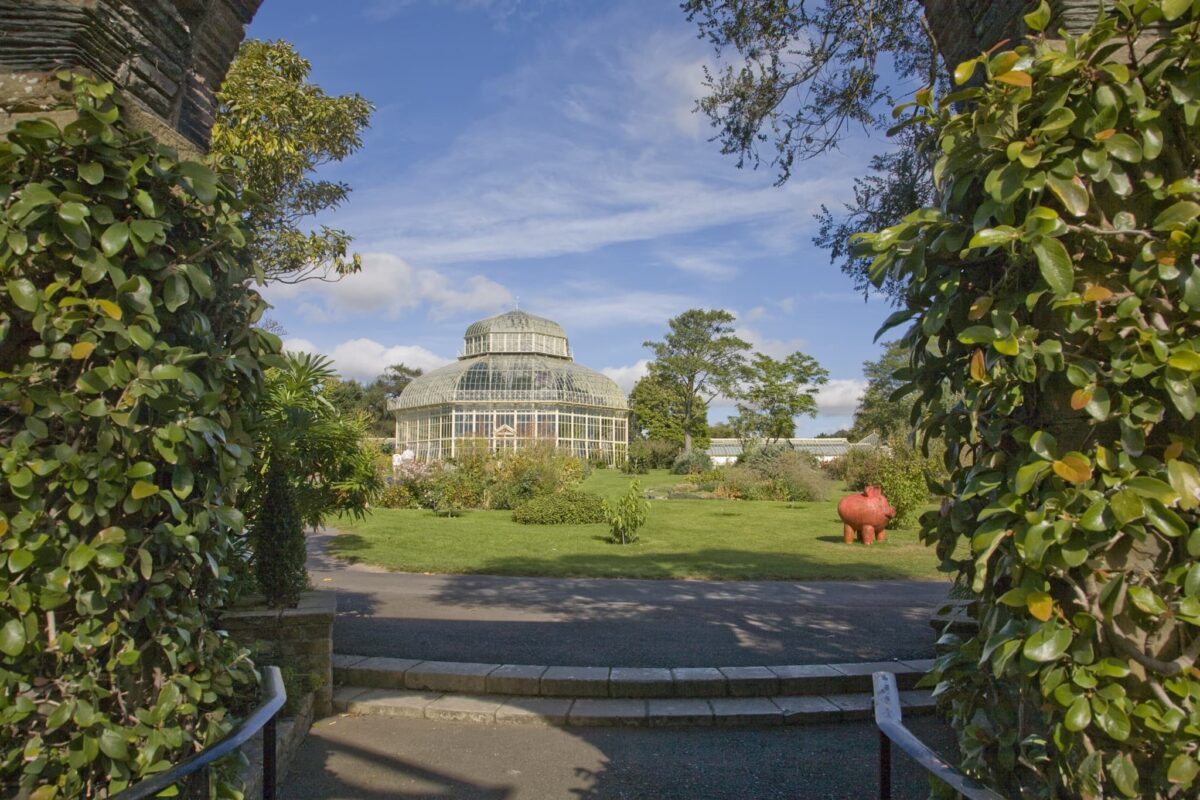
Plants began to arrive from around the world and relationships were built with Kew Gardens and Edinburgh Gardens. In 1992, a new program of restoration was put into place and the gardens were refurbished a magnificent restoration of the Turner Curvilinear Range of glasshouses was completed for the bicentenary of the Garden in 1995.
Don’t forget to make a visit to the John Cavanagh or Gravediggers Pub reputed to be the best pub in Dublin and you may see a celebrity or two hanging out there.
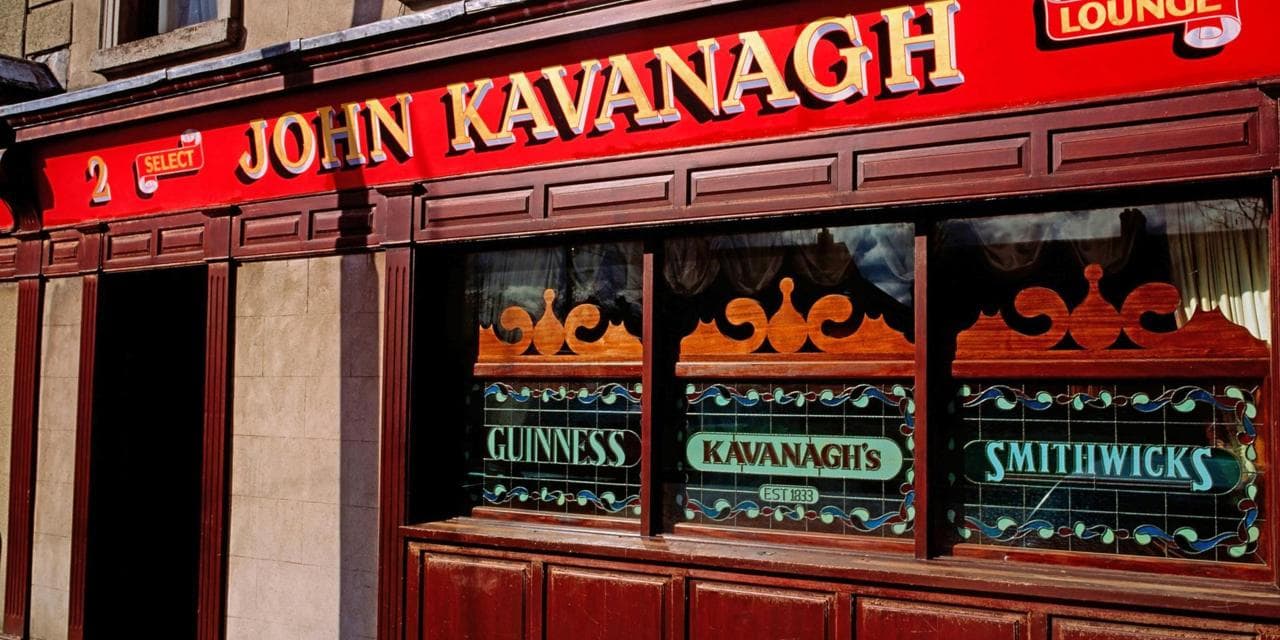
20 Famous Pubs in Dublin for a pint and some craic
Bodysnatcher’s Watch Tower
You should also take a moment to check out The Bodysnatcher’s Watch Tower the watchtowers were set up in the 1800s to prevent the unscrupulous from digging up the bodies for medical science at the time.
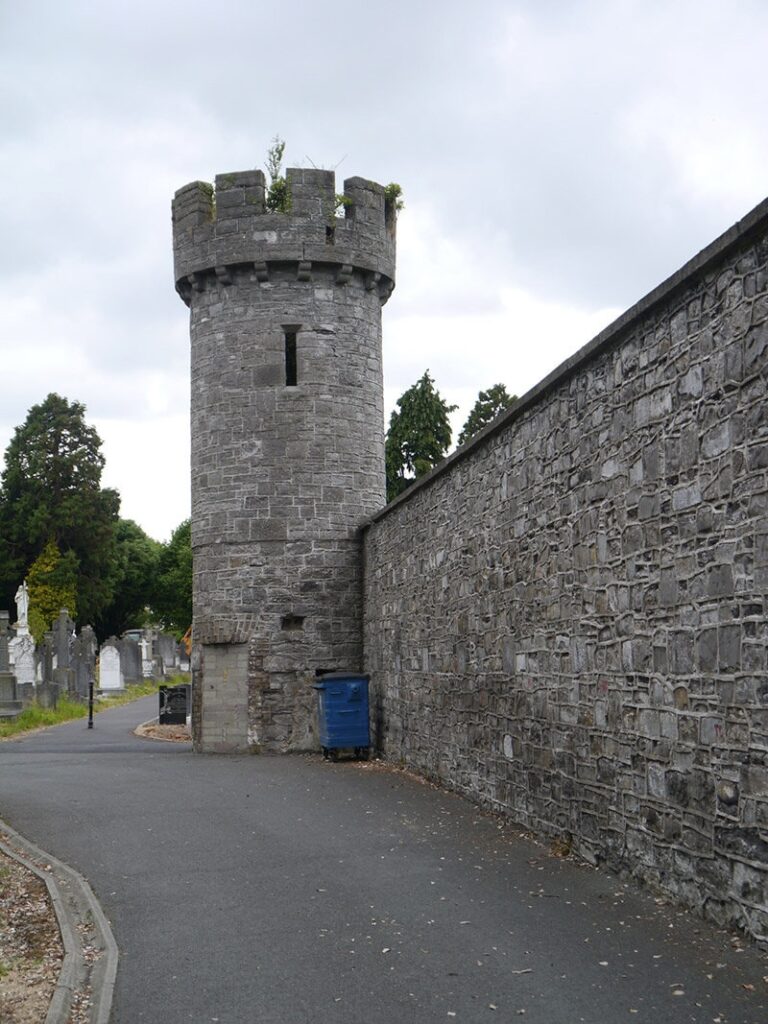
Glasnevin’s Watch Towers were a fine selling feature back in the day and no bodies were ever reported being snatched from the graveyard.
Here are some more posts to read before visiting Ireland
One week in Ireland a road trip – Dublin to Athlone
15 tips for celebrating St. Patrick’s Day in Dublin
Ireland’s Ancient East – an epic road trip
34 Great things to do in Dublin Ireland
Cool things to do in Dublin off the beaten path Ireland
15 Dublin Don’ts – a little bit of Irish craic for you
Ultimate Wild Atlantic Way Route
101 Landmarks in Ireland to see
So, do you have a favourite spot to visit in Ireland?
